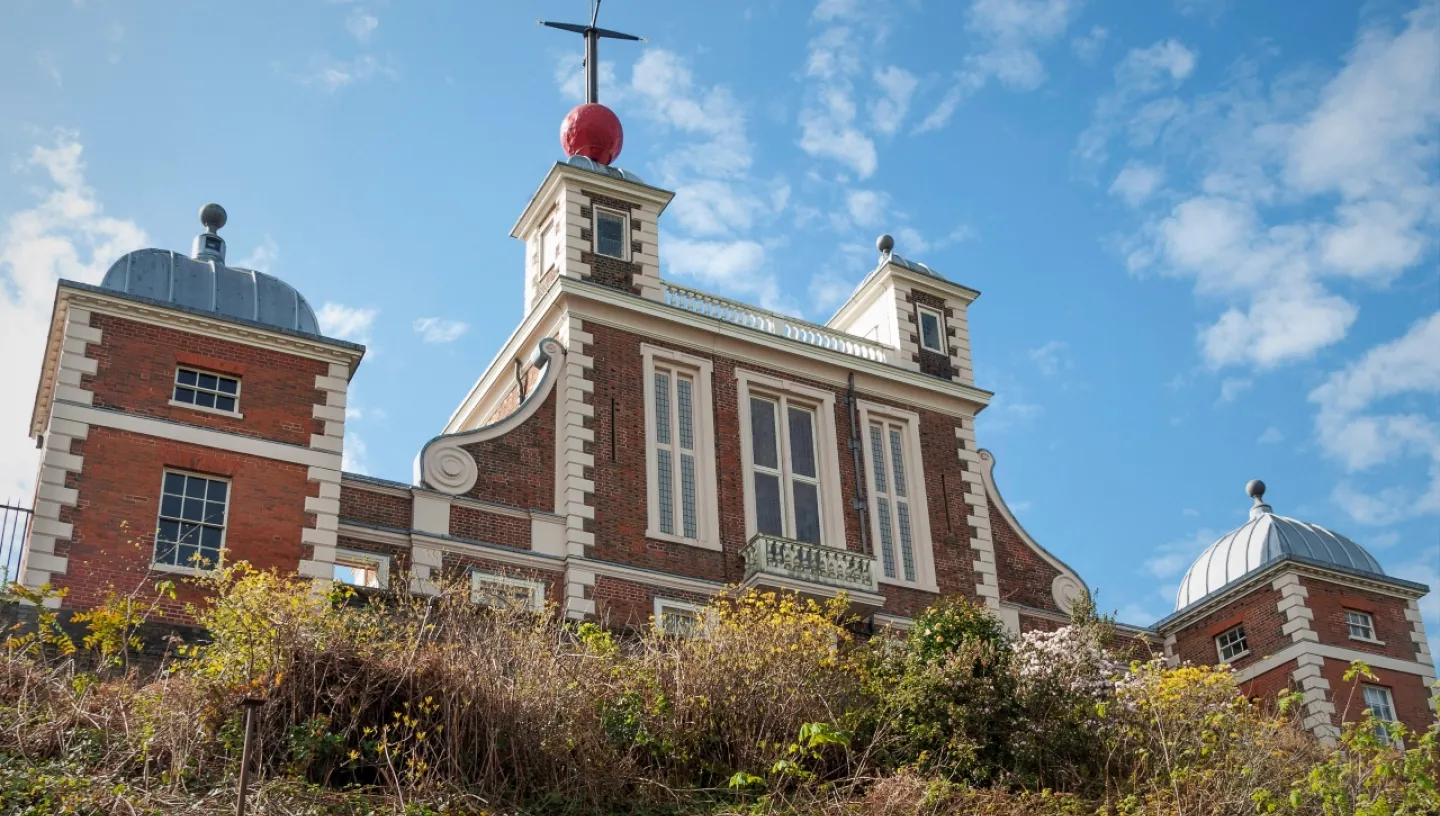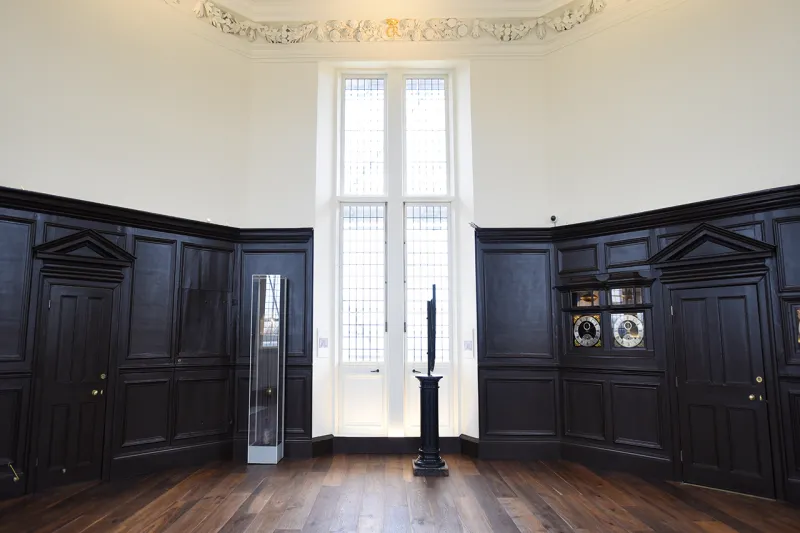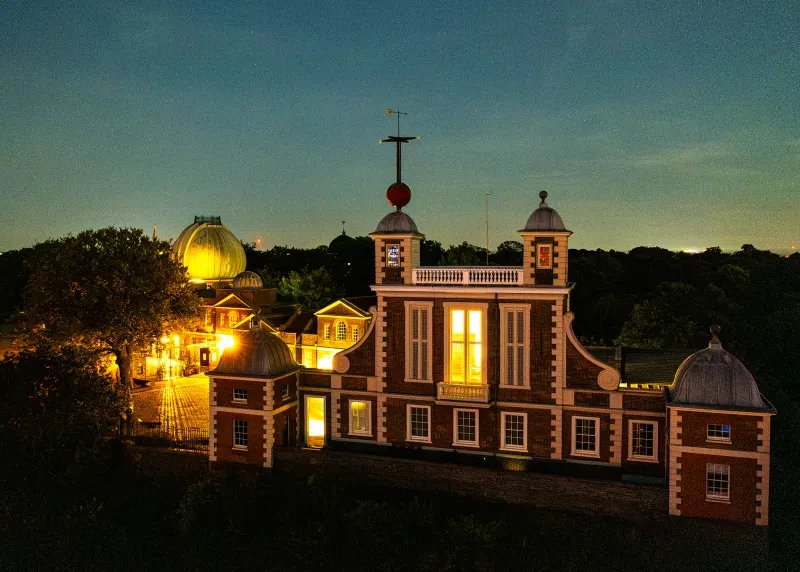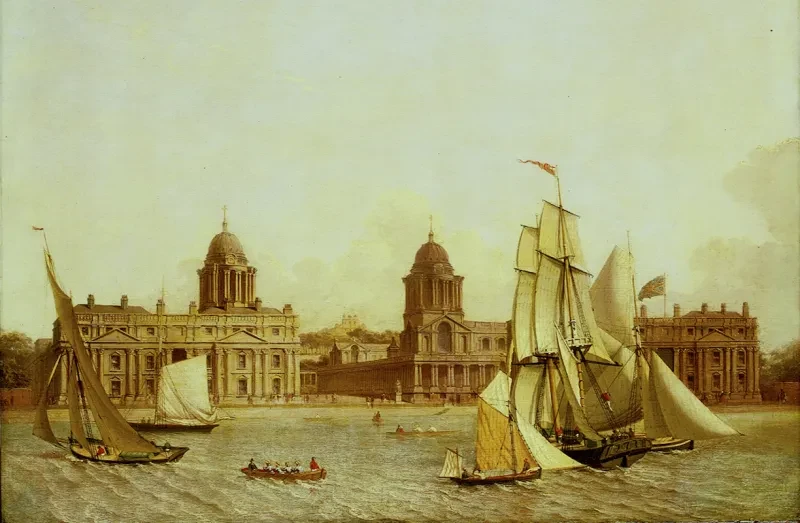
Best known for designing St. Paul's Cathedral, Christopher Wren's two loves of astronomy and architecture were combined when he worked on the Royal Observatory Greenwich.

Who was Sir Christopher Wren?
Christopher Wren is best known as the architect of St. Paul's Cathedral but his first love was science and mathematics.
During the first part of his career he worked as an astronomer. The Royal Observatory at Greenwich, which he designed, combines both aspects of his work: astronomy and architecture.
In 1657, when Wren was only 25, he was appointed Professor of Astronomy at Gresham College, London. A group of scientists met there regularly to discuss their ideas. This group formed the core of what would later become the Royal Society. After several more years spent on scientific research, Wren became Savilian Professor of Astronomy at Oxford in 1661.
Sir Christopher Wren's work still surrounds us today, and includes both churches and secular buildings. Some of his most well known buildings include:
- The Royal Observatory Greenwich
- St. Paul's Cathedral
- South Front of Hampton Court Palace
- Kensington Palace
- The Monument to the Great Fire of London
- Marlborough House
- Theatre Royal, Drury Lane (now demolished).
- Wren had actually been working on St. Paul's before the Great Fire of London. A week after his initial designs were approved, the fire took place and burnt the cathedral.
- When he was younger, Wren was a keen inventor, coming up with things such as an instrument for writing in the dark.
- When the Great Fire of London destroyed many of London's buildings, Wren designed 51 new churches.
- Sir Christopher Wren was featured on the first £50 note in circulation, in circulation until 1996.
How did Wren's interest in architecture begin?
Wren's interest in architecture developed from his study of physics and engineering. At a time when architecture was considered to be a part-time interest for wealthy and educated gentlemen, Wren was one of the few architects to have a sound knowledge of the structure of buildings.
When was the Royal Observatory built?
In 1675, Wren received a commission from Charles II which must have been of special interest to him. The idea was to create a Royal Observatory for the use of John Flamsteed, who that year had been appointed as the first Astronomer Royal.
The King hoped that a proper study of the Moon and the stars would help to perfect navigation at sea.
Using telescopes and other instruments in the new Observatory, the astronomers would record the Moon's position relative to certain stars at set times. This would enable navigators to fix their position at sea more accurately. The night sky would, in effect, become the sailor's clock. It was hoped in this way to avoid the growing loss of life and ship's cargoes in shipwrecks.
How was the Observatory built?
To save money, second-hand building materials were used to build the Observatory. Brick and stone were brought along the River Thames from an old Tudor fort at Tilbury that was being repaired. Other money came from the sale of old gunpowder.
In spite of these limitations, Wren managed to create the beautiful Octagon Room. Underneath the Octagon Room, the Observatory included the living quarters for the Royal Astronomer.
Why did Wren design a hospital for sailors at Greenwich?

In 1682, Wren designed a Royal Hospital for soldiers at Chelsea.
The idea of building a similar hospital at Greenwich for injured and disabled seamen may have been that of King James II. As Admiral of the Fleet, he had seen much action at sea.
However, nothing was done during his short reign, and it was left to Queen Mary to put the plan into action. Wren's original scheme was to build a three-sided arrangement of buildings, incorporating a block by John Webb which had originally been intended as a new palace for King Charles II.
Queen Mary insisted that the view of the Queen's House from the river should be kept, so Wren adapted his plan. The Hospital was finished in 1702, in the reign of Queen Anne.
When did Wren die?
Wren died in 1723 at the age of 91.
His achievements during his long life were considerable. He was one of the first professional architects in this country to have a sound knowledge of engineering. He introduced the Baroque style to Britain, though he gave it a more restrained flavour than on the continent.
His own view was that St. Paul's Cathedral was his masterpiece. His tombstone inside the cathedral includes a Latin inscription which reads, 'Lector, si monumentum requiris circumspice'.
Translated, the text means:
Reader, if you seek his monument, look around.
Find out more







